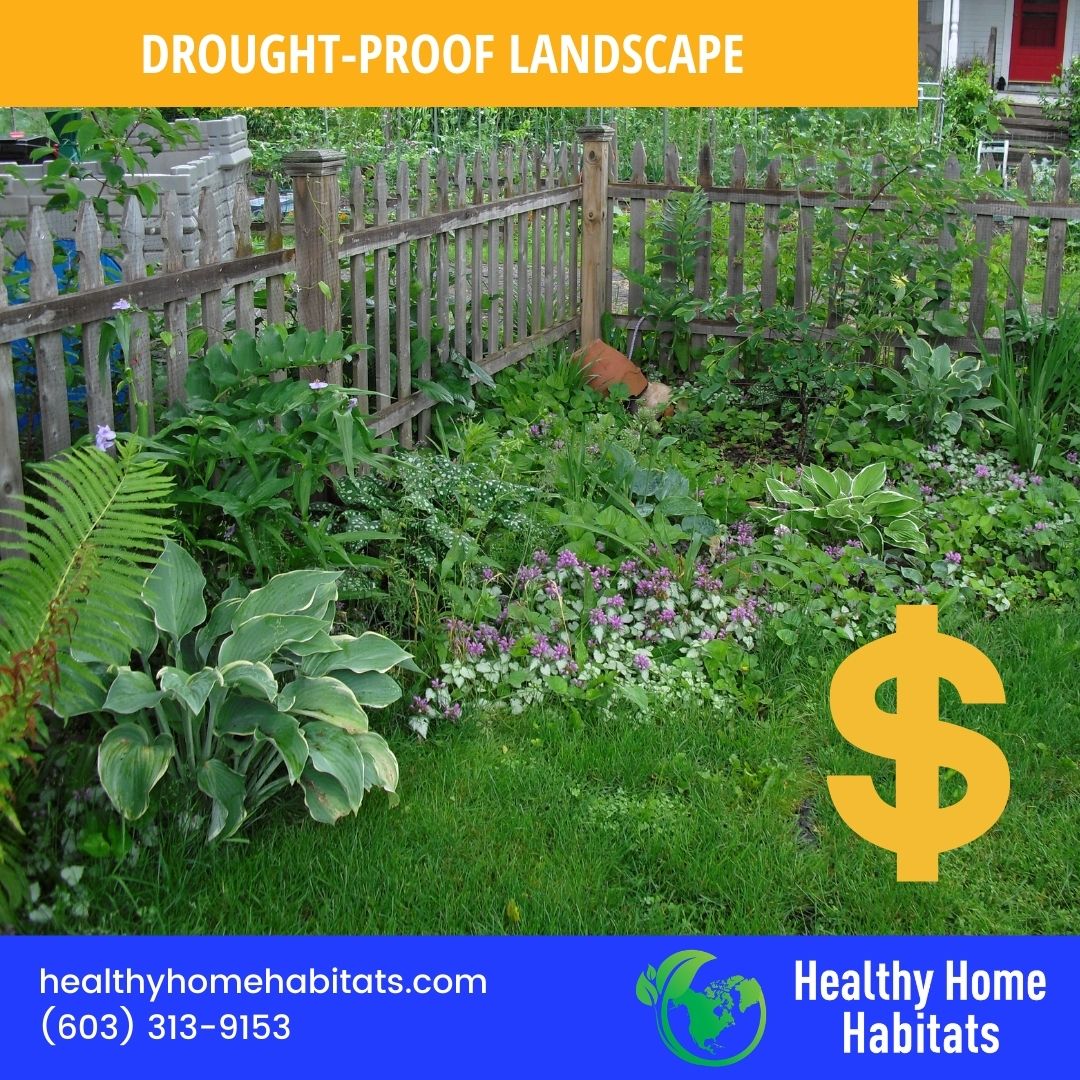No, you are not imagining it. Not only are the droughts back again this spring in the Northeast US. But they are projected to continue through the growing season. Drought and erratic, intense rainstorms are predicted. Communities are implementing outdoor, landscape watering restrictions, even considering increases in the cost of residential water use. This is a great time to take steps to drought-proof your landscape. You can modify and create areas that absorb and use water more effectively than our traditional practices. The following are five, low-cost, DIY ideas to consider:
#1 – Reduce Your Lawn Areas As you may already know, turf grass lawns require a tremendous amount of water. You can reduce your need and use of the purified water you pay for every month by creating, instead, more planting beds for vegetables, shrubs, trees and/or flowers. You can also inter-plant a variety of native and naturalized, low groundcovers within your turf that will spread over time adn reduce the amount of grass tow mow.
#2 – Ditch the Black Fabric Yes black, landscape fabric reduces weeds but it also sheds rain, leaving your shrubs and trees repeatedly “high and dry” from our more intense rain events. Landscape fabric is permeable in a slow, flat sort of way, but not in the way rain and particularly our recent, fast and heavy rains happen.
#3 – Plant More Native Plants After establishment, native plants do not need additional watering. They are adapted to our weather conditions. There is no need to buy them every year. No need to worry about late frosts, native plants know to wait before sprouting. Even better, our struggling and hungry pollinators will love you for planting more native perennials, shrubs and trees!
#4 – Use Shredded Leaf Mulch – Lots of It! This particular type of (free) mulch retains moisture in the soil, provides nutrients and reduces weeds in a way that absorbs instead of shedding rain. In fact shredded leaf mulch acts much like a sponge. It’s free to Keene residents at our Recycling and Transfer station. I watched the pile steam all winter! Alternatively you can make your own each fall by gathering and mowing the leaves in your yard. Then you rake these shredded leaves into your flower/shrub/garden planting areas. This approach feeds the grass you’ve kept as well as benefits the rest of your landscape. Make sure to not cover plant crowns or mound the mulch up against tree bark.
#5 – Consider a Soaker Hose with a Mechanical Timer For the annual and non-native plants you just can’t give up, a soaker hose laid under shredded leaf mulch is a tremendous, cost efficient way to optimize the additional water they need. A mechanical timer is inexpensive. They don’t rely on batteries and you won’t wake up in a panic in the middle of the night having left the sprinkler/soaker hose on!
These measures can save money and also protect the valuable shade trees and shrubs that provide seasonal interest, shade, wind protection, temperature reductions of your home, someday increasing your home’s resale value.
Michele Chalice is the owner of Healthy Home Habitats, a Keene, NH – based consulting and design firm focused on environmental gardens, household resource efficiencies and strategic family gardening. For more details, call 603-313-9153. RESOURCES: https://www.des.nh.gov/sites/g/files/ehbemt341/files/documents/droughtupdate-202104_0.pdf https://en.wikipedia.org/wiki/Climate_change_in_New_Hampshire

